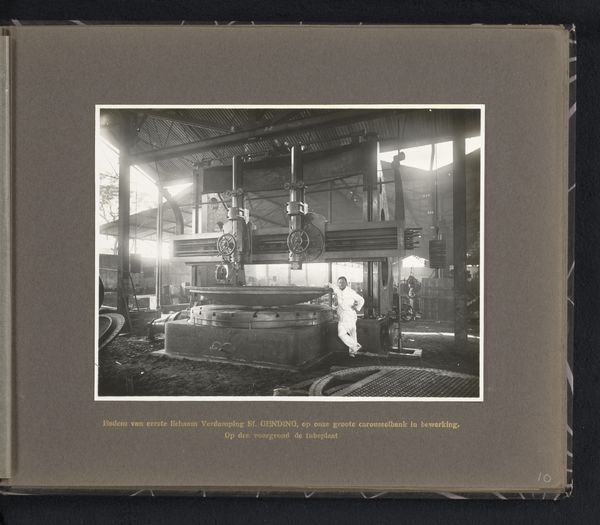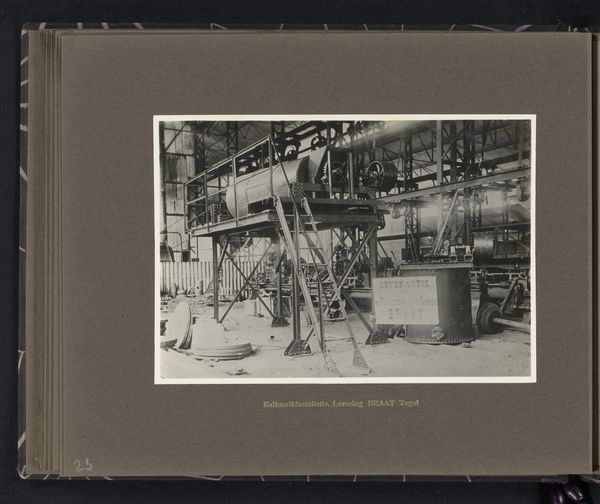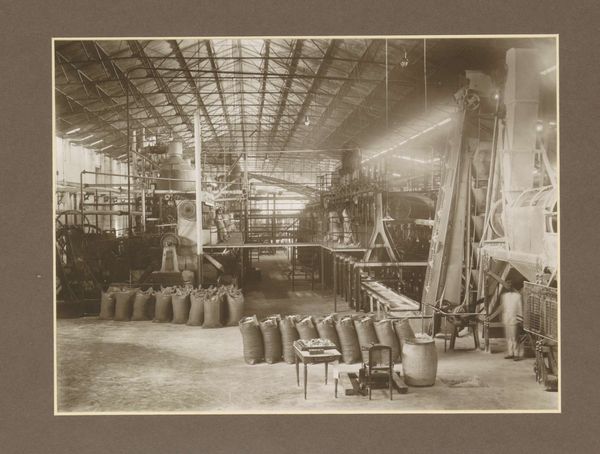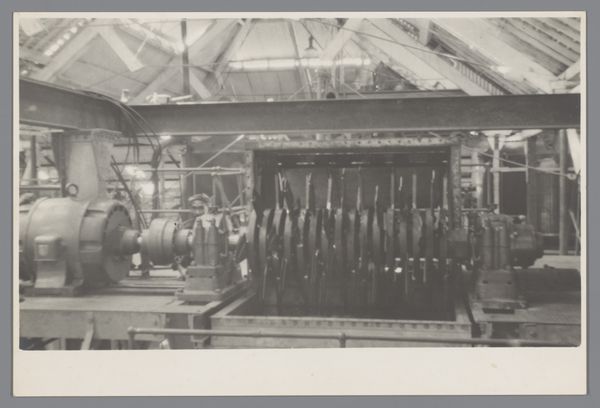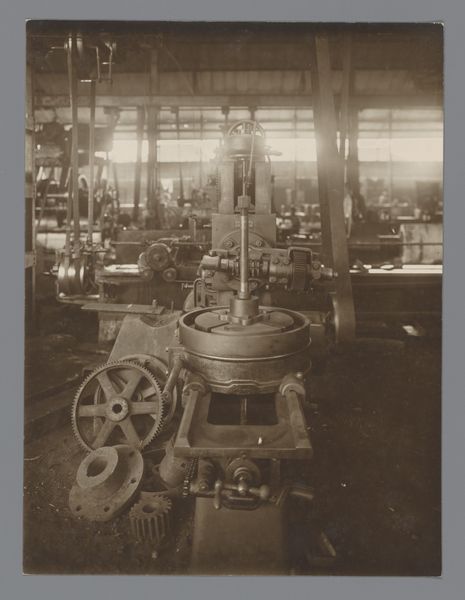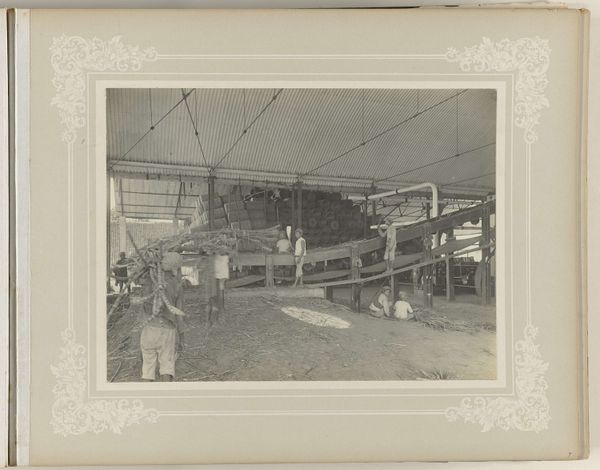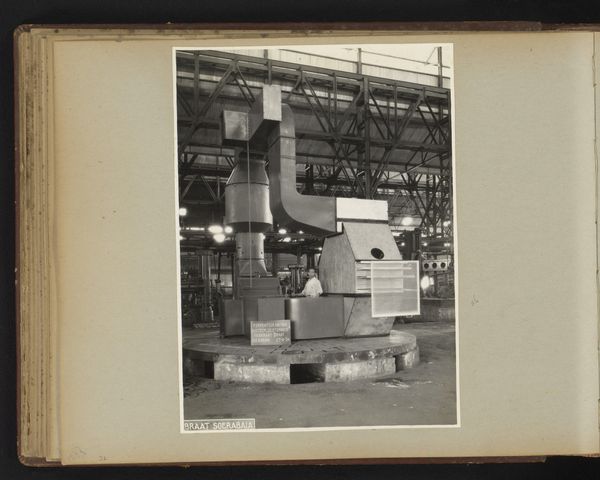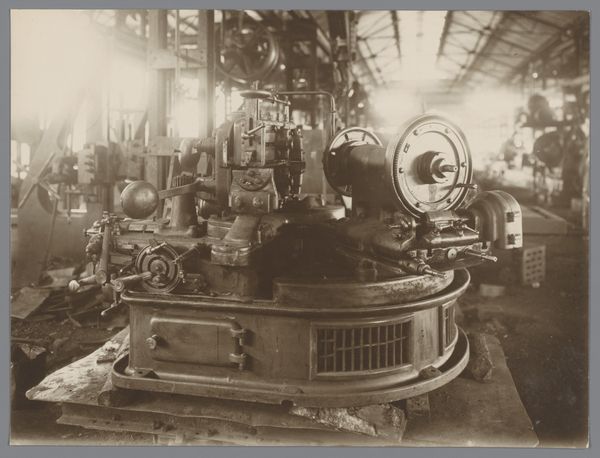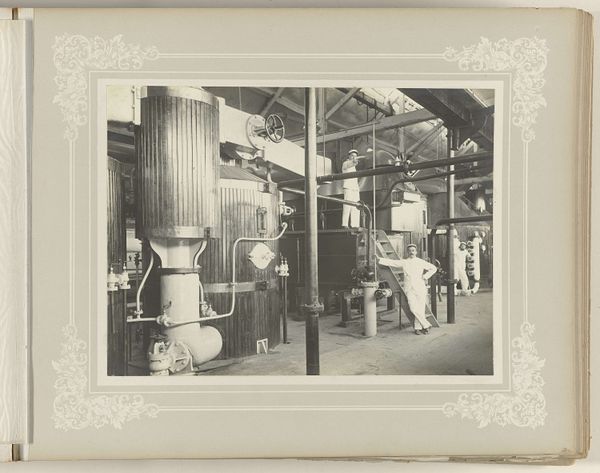
Sf. Brangkal / Rietbladcrusher met gietstalen gearing, standaards en rollen 1916 - 1924
0:00
0:00
anonymous
Rijksmuseum
photography
#
sculpture
#
photography
#
realism
Dimensions: height 174 mm, width 237 mm, height 240 mm, width 290 mm
Copyright: Rijks Museum: Open Domain
Editor: This photograph, taken between 1916 and 1924, captures a "Rietbladcrusher met gietstalen gearing, standaards en rollen" – a reed crusher with cast steel gearing, standards, and rollers. It feels very documentary, a stark and utilitarian record. What strikes you about this piece? Curator: It's compelling as a document of industrial labor and materiality. Notice the emphasis on the machine's components: the gears, the rollers, even the sign proclaiming its function. How do you think this photograph challenges conventional notions of art? Editor: Well, it's not beautiful in a traditional sense. It’s not a landscape or portrait; it seems to be celebrating industrial processes instead. Does that disrupt artistic hierarchies? Curator: Exactly. By focusing on the industrial, it elevates the status of labor and production. We’re asked to consider the machine as an object of value, reflecting the effort and resources embedded within it. Think about the social context, the increasing industrialization. Does this influence your interpretation? Editor: Definitely. It’s less about the aesthetic experience and more about the commentary on the industrial revolution. It forces you to confront the changing landscape of work and the materials that shaped it. Curator: And what about the act of photography itself as a mode of production? The photograph is both a document and a product, made with specific materials and through a certain process. Editor: I hadn't thought of it that way, but you're right. The process is front and center in both the subject and the artwork itself. Thank you for sharing. It is much clearer to me now. Curator: My pleasure! Now you see how paying attention to production opens a dialogue about art's complex relationship to the society in which it's made.
Comments
No comments
Be the first to comment and join the conversation on the ultimate creative platform.
